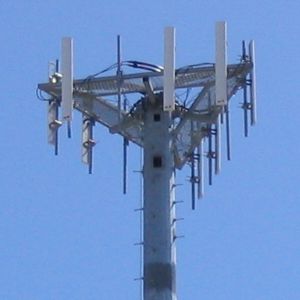NBN Co commits $1.7b to extend fixed wireless, FTTN footprints

Some 420,000 outer-metropolitan premises will now receive fixed-wireless rather than satellite broadband services after NBN Co announced it will invest an additional $1.7 billion and build an additional 1300 wireless towers to manage expected demand on its long-term satellite service (LTSS).
The investment – mooted in the findings of the NBN Co Fixed Wireless and Satellite Review announced today – comes as the government works to ensure the LTSS, which is expected to be available to the public by 2016, will be able to meet demand that is now projected to be nearly three times that originally anticipated.

NBN Co now expects that more than 600,000 customers outside the fixed-wireless footprint would be wanting broadband, up from initial projections of approximately 230,000 premises. This increase will push the total cost of the satellite and fixed-wireless rollout to $5.2 billion by 2021, up from $3.5 billion in earlier estimates.
The investment will nearly double the number of fixed-wireless towers to be installed, with 2700 such sites now expected to be installed across regional and metropolitan-fringe areas – many of which were previously scheduled to receive satellite services.
“While Australia is now one of the most urbanised countries in the world, over 1 million homes and businesses are outside the reach of economical high-speed fixed broadband based on existing technologies,” said NBN Co chief strategy officer JB Rousselot, who headed the review.
“Contrary to popular belief, most users are not in regional and rural Australia – but in the outer [city] fringes and areas where populations are dispersed or hard to reach.”
The change in design will also see an additional 25,000 premises upgraded from previously-planned fixed-wireless and satellite services; instead, they will be served with fibre-to-the-node (FTTN) services.
NBN Co will work with existing mobile operators to reduce costs through infrastructure sharing, CEO Bill Morrow said while noting the significant challenges that face the company – such as running adequate backhaul to the new towers, and acquiring suitable radiofrequency spectrum in outer-metropolitan areas.
Increased reliance on fixed-mobile services would reduce the pressure on satellite services that, Morrow said, needed to be managed carefully and with likely speed restrictions to ensure equitable access.
“While the capacity of NBN Co's new satellites is many times greater than previously available satellite services, it remains a fixed and finite resources that must be managed carefully,” Rousselot said.
“Capacity is provided in a series of beams that each have their own capacity limits. This planning was done and locked into the design when manufacturing contracts were signed more than two years ago; as a result, NBN Co has a heightened need to manage satellite capacity beam by beam – and a need to change the way services and products are developed.”
Signups to NBN Co's Interim Satellite Service were halted late last year after demand far outstripped the capacity of the service. In February, the government committed $18.4m to access increased capacity from Optus as a short-term fix.
To ensure that the new satellite services avoid congestion problems, the review recommended retail service providers (RSPs) commission a “standard satellite construct” of 150Kbps, on average, per user – which Rousselot said is “equivalent to a [shared] wholesale speed of 25Mbps” and includes “strict” download limits for satellite services.
“The review has given us greater confidence that all Australians can get access to better broadband at up to 25Mbps at the wholesale level,” he said.
“We believe we will be able to complete the rollout of the network within the 2019 timeframe of the Statement of Expectations issued to us by the government.”
NBN Co's satellite services currently deliver broadband to 43,652 customers, while its fixed-wireless network reaches 80,868 premises and has 12,859 paying customers.